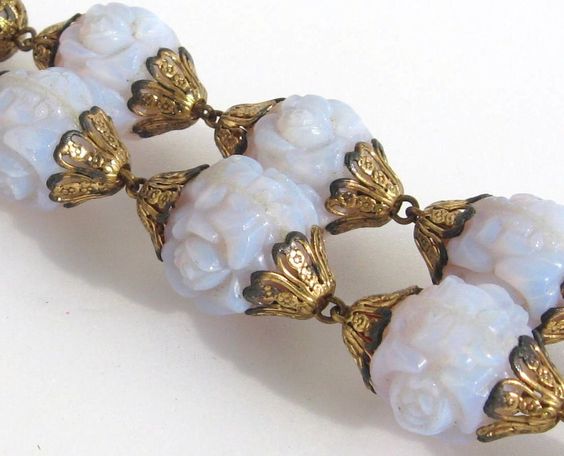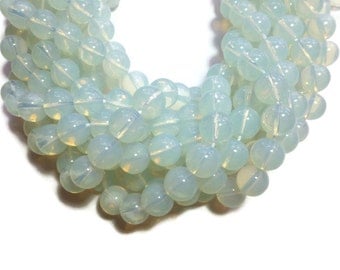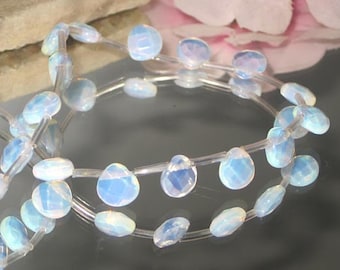Is it Opaline, Opalescent Glass or Opalite?

Opaline, or opal glass, was made in white, green, and other colors. The glass had a matte surface and a lack of transparency. It was often gilded or painted. It was a popular mid-nineteenth-century European glassware. Turquoise blue, yellow, and pink were the earliest colors used on opaline glass, but more vivid colors were used later to imitate the popular Bohemian glass. I've been dealing with jewelry so long that it sometimes takes me awhile to catch on to new trends and changes that creep up and take hold. With easy access to so much information all at our finger tips, we tend to get lazy or maybe just too trusting on what we read. We look for a fast answer to our questions and we tend to take first authoritative sounding source and stop there or maybe cross check a couple other listings just to be sure. If they all say the same thing we figure its safe to say they are correct, right? Well I remember way back before 'the internet' when information was not so easily found we had flip through reference books and manufacturer catalogs to identify our glass items as to what their correct trade name was. This trade name is the name a manufacturer gave to their product. This unique identifier is the name both the trade and consumers use to describe that item. When you hear this unique name you know exactly what it is and what it will look like because you recognize the name.
The reason I bring this up is a recent post of someone asking what kind of milky translucent glass beads they had. Multiple people unanimously responded opaline. At first I thought that sounds right but then the more I thought about it, I don't ever recall these glass beads being called that 30 years ago. I thought maybe things changed and the manufacturers are marketing this opal looking glass as opaline now. So I did what everyone does now, I just Googled opaline glass beads. Well big mistake, that did not offer much help. It seemed everyone was calling this opal looking glass opaline too, so no help there. Still not convinced a change was actually made but more likely a case of everyone just copying from the information they were provided in their search, I went back to to the dark ages...... I pulled out my old guides and ID books. Yes paper and hard cover books still exist in the dusty dark corners of our rooms. My 10 year old edition of Kovels had a section on glass identification clarified and made me realize that I did not miss a change in how the glass was named over the years.
Here is the difference and how to tell which kind of opalescent glass you have:
 | Opaline, or opal glass, was made in white, green, and other colors. The glass had a matte surface and a lack of transparency. It was often gilded or painted. It was popular in mid-nineteenth-century European glassware. Turquoise blue, yellow, and pink were the earliest colors used on opaline glass, but more vivid colors were used later to imitate the popular Bohemian glass. The key identifier of opaline is it is opaque. You can not see through it and it is a colorful glass. |
 | Opalescent glass is translucent glass that has the tones of an opal gemstone. It originated in England in the 1870s and is often found in pressed glassware made in Victorian times. Opalescent glass was first made in America in 1897 at the Northwood glassworks in Indiana, Pennsylvania. Some dealers use the terms opaline and opalescent for any of these translucent wares. Opalescent glass was named for the opal gemstone. The key identifier of opalescent glass is it is translucent and you can either see through it or see light enter the bead. It looks milky with a glow to the body of the bead just like opal can. |
 | Opalite is a man-made opalized glass resin that is fused with metal to create an opalescent effect. It is also used to promote impure varieties of variously colored common opal. Inside of opalite there appears to be a rainbow. You can read through Opalite, because it is translucent. The key identifier of opalite is it is a bright opalescent effect. It has a strong blue play of color unlike the more subdued opalescent glass. This blue coloration is more noticeable when viewed over a dark background. |

